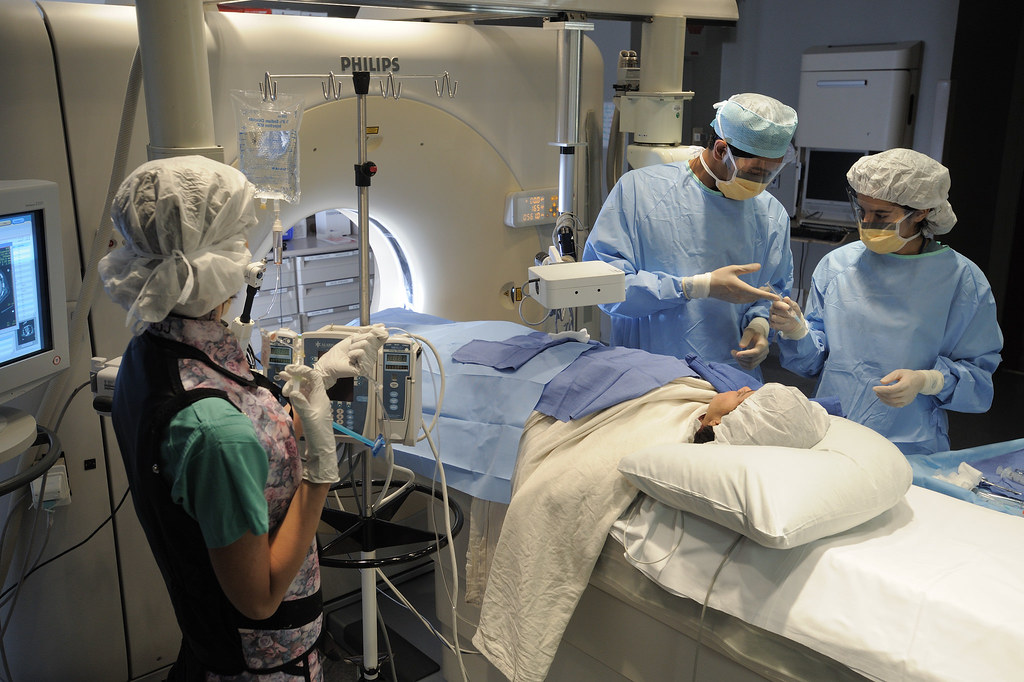Seeing and treating disease in one step
Imagine a future when your doctor can not only spot a disease hiding deep inside your body, but also send a treatment straight to that exact spot at the same time. This is as fascinating as a guided missile with a camera attached. That’s the magic of theranostics, also known as theragnostics1. The term coined by John Funkhouser itself is a blend of “therapy” and “diagnostics,” and it lets doctors “see what they treat, and treat what they see,” all with remarkable precision2.
Beyond the old playbook
Traditional medicine often separates diagnosis from treatment. You first get a scan, followed by a therapy—sometimes that is done using a blunt instrument, like chemotherapy, that can’t differentiate between a healthy and a sick cell. Theranostics flips this on its head. It uses molecular imaging to find disease-specific biomarkers3. And upon finding them, the same or a similar molecule delivers the therapy. Its high precision ensures that only troublemakers are targeted, leaving the healthy tissues alone, resulting in highly effective treatments, fewer side effects, and the ability to check—almost in real-time—if the therapy is actually working4,5.
How theranostics works
At the heart of theranostics is the hunt for a molecular marker that’s rare on healthy cells, but abundant on diseased ones. Scientists design a “homing device” like a peptide or antibody that latches onto this marker6.
For diagnosis, this device is paired with a tiny “beacon,” often a radioactive tracer, that identifies the disease on a scan7. By noticing where the scan glows, your doctor knows exactly where the disease lives.
After knowing the location of the disease, comes the therapy step. The same homing device is loaded with a therapeutic payload, maybe a radioactive atom or a drug, and sent back into your body, where it homes in on the same bullseye and delivers the payload right where it is needed8. And most importantly, the doctors can use imaging to watch the therapy in action and course-correct if needed.
Key advantages and benefits
Tailored just for you
Theranostics is what personalized medicine needs the most. It enables doctors to match the treatment to the unique molecular fingerprint of your disease after a prior analysis of benefits and risk factors9. As a result, only those who are likely to benefit get therapy. This “patient stratification” means non-responders avoid unnecessary treatments, and resources are used in a more efficient manner.
Pinpoint power, less collateral damage
Given that theranostics can deliver the therapy straight to the target, much higher doses can be delivered to diseased cells, without harming the healthy tissues. This means more effective treatment with far fewer side effects—a huge improvement over conventional “carpet bombing” approaches like radiation therapy for cancer8.
Early feedback, smarter decisions
The integrated imaging in theranostics allows doctors to see the therapy and its consequences in action, without having to wait months to see if a treatment is working. If it isn’t, the plan can change—fast—so you’re not stuck with an ineffective therapy10.
Identifying subtle metastases
In cancer theranostics, scans can find the main tumor, in addition to the tiny metastases hiding elsewhere in the body11. Such tiny things are hard to detect on a regular scan. So, in this way theranostics help doctors plan a more complete and effective treatment.
Overall, theranostics offer treatment with fewer side effects, more effective disease control, and the ability to adapt treatment quickly, allowing patients to feel better and get back to living their lives earlier.
Oncology leads the way in theranostics
Cancer has been the proving ground for theranostics, and this is because many tumors display unique markers that make them perfect targets for this approach. Here are some real-world examples:
- Thyroid cancer: For decades, doctors have used radioactive iodine to both find and destroy thyroid cancer cells12. A small dose lights up the cancer on a scan, while a bigger dose delivers the knockout punch.
- Neuroendocrine tumors: These rare tumors often have somatostatin receptors. A scan with Gallium-68 DOTATATE shows where the tumors are after binding with those receptors. And if they light up, Lutetium-177 DOTATATE delivers radiation therapy directly to those spots13.
- Prostate cancer: Most prostate cancers express a protein called PSMA. PET scans with radiolabeled PSMA tracers tell us the cancer’s location, and then Lutetium-177 PSMA therapy can target and treat even widespread, resistant diseases14.
- Non-Hodgkin lymphoma: Some therapies use antibodies tagged with both diagnostic and therapeutic radioisotopes to find and treat lymphoma cells that carry the CD20 marker15.
Challenges and future directions
New targets, new frontiers
Scientists are working tirelessly to find more unique biomarkers, especially for cancers and diseases that don’t yet have a theranostic option. The more markers we find, the more diseases we can treat this way. The hope is to expand theranostics to other diseases—maybe even heart disease, infections, or autoimmune conditions16-18.
Better tools for the job
There’s a push to develop new radioactive atoms, such as powerful alpha-emitters, and smarter delivery vehicles, including nanomedicines and gene therapies, to further increase the precision and reduce the toxicity of theranostics19.
Personalized dosing
The high precision of theranostics allows the use of greater doses for more effective treatment; however the perfect dose varies from patient to patient. Thus, research is ongoing to optimize the dosing for improved personalization of theranostics20.
From lab to clinic—for everyone
Critical challenges include manufacturing these complex agents, getting them to hospitals before they decay, and making them affordable. Also, work needs to be done in training doctors and building clinical guidelines for the benefit of more patients.
The Bottom Line
Theranostics is more than just a new tool—it’s a new way of thinking about healthcare in general. The unification of diagnosis and therapy delivers the dream of truly personalized, precise, and adaptive care. Although its present use case revolves around cancer care, it has the capacity to transform the entire landscape of how we find and fight disease.
